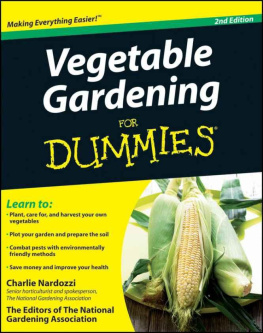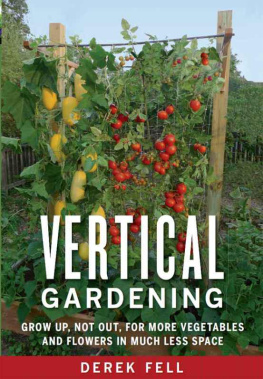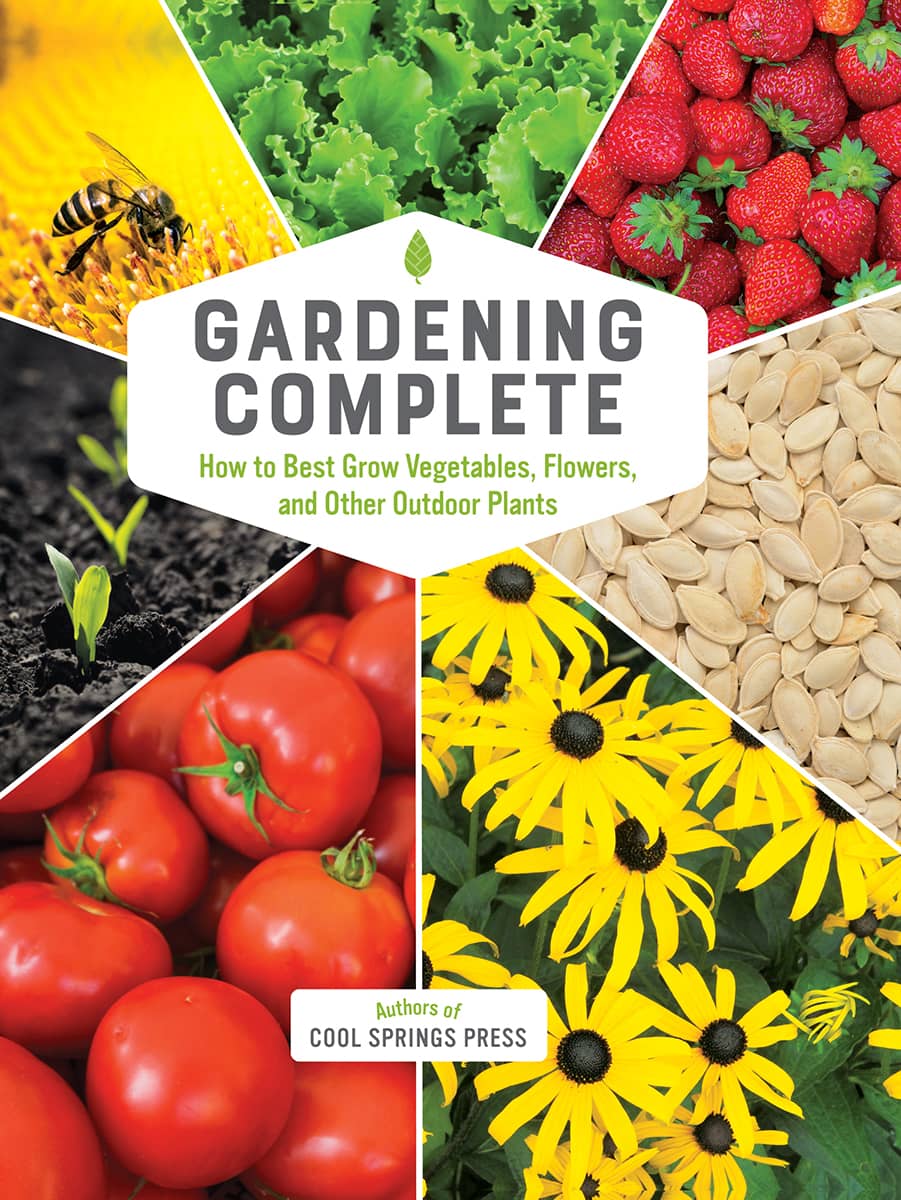CONTENTS
Guide
GARDENING
COMPLETE
How to Best Grow Vegetables, Flowers, and Other Outdoor Plants
Authors of
COOL SPRINGS PRESS

INTRODUCTION
THIS IS THE MOST UP-TO-DATE AND COMPLETE guide to basic gardening for homeowners available today. In these pages, eight of North Americas top gardening expertsand Cool Springs Press authorspresent 19 subjects of critical interest to anyone interested in learning or broadening their gardening skills. Whether your main interest is in designing landscapes and gardens, ornamental gardening to make your yard more attractive, or gardening to provide nutritious edibles for the family table, this book will become your definitive source of information. It is intended for serious beginning to intermediate gardeners, but even veteran gardeners will be intrigued by what these experts have to say about core gardening skills and common horticultural subjects.
Above all, this is a practical book that will both tell you and show you how to accomplish the routine activities of gardening, from planning and planting your garden, to routine care for the garden during the growing season, to dealing with pests and diseases, to harvesting fruits and vegetables. While many gardening books focus on regional plant species or devote large sections to some form of plant catalog, this book is different. Gardening Complete serves not only as a self-contained manual for gardening skills and information in all regions, but also as a sampler that may help you determine where to focus your gardening hobby in the future or even help you identify authors youd like to explore further. Each of the eight authors has an impressively broad background in publishing and lecturing on gardening, and you may discover a new favorite writer in these pages. We havent just allowed these authorities to express their individual viewsweve encouraged them to do so. As is true in a healthy garden, weve aimed at diversity for this book.
This book is not an organic gardening book per se, but if you have any previous familiarity with Cool Springs Press or any of these authors, you will know that we tend to take a low-impact approach to gardening. Thus, our authors generally offer advice that is gentle to the soil, to the environment, and to beneficial insects and animals. That is not to say our authors will agree on every subject. In these pages, you may find that there is some disagreement among authors on subjects such as fertilizing or pest control. Gardeners in general are an opinionated group, and garden writers are even more so. One gardeners preferred method may not be another gardeners, and thats finewed all be well advised to remember that there are always multiple ways to succeed in any endeavor.
And succeed you will if you follow the advice on the following pages. These authors have extensive experience lecturing, answering questions on radio and television call-in shows, teaching classes, and writing. They are among the most passionate gardeners you will ever meet and they have helped thousands of home gardeners just like you.
Welcome to Gardening Complete.
CHAPTER 1
BOTANY FOR GARDENERS
By George Weigel
BOTANY IS THE BRANCH OF BIOLOGY THAT FOCUSES on plant life. Its a hands-on science that can be very helpful to a gardener because understanding how plants work can drastically cut a yards plant death toll.
One of the first bits of this science that gardeners encounter is how plants are named. Names matter a lot in the plant world. Theyre the tools that help gardeners sort out minute botanical variations and guide us to the all-important goal of getting the right plant in the right placethe not-so-secret secret to successful gardening.
A gardener who ignores plant names (a rose is a rose is a rose) is much more likely to end up with bland tomatoes and dead shrubs than gardeners who research exactly what to plant where.
Granted, plant names can make eyes glaze over in a hurryespecially when botanists, horticulturists, and other plant geeks throw around those hard-to-pronounce Latin botanical names. But plant experts dont spout Latin just to show off (usually). Theyre using it because its a standard system that ensures everyone is talking about the exact same plant everywhere on the planet.
Without it, you might think youre buying a native perennial flower called bluebells (Mertensia virginica) when youre actually getting a strappy-leafed spring bulb called bluebells (Hyacinthoides hispanica). Or when youre talking about your stunning hollyhocks (Alcea rosea), a farm-country gardener might say, Sounds to me like youre talking about the outhouse plant (also Alcea rosea).
The bugs you see in your garden may include the essential pollinators, such as this bee.
WHY LATIN?
When primitive gardeners first started trying to figure out the plant world, plants were crudely namedtypically by what they looked like. Early scientists began recording these plant names by 200 BC.
That worked fine until people fanned out, cultivated plants for more and more uses, and moved them to other regions. Then it became necessary to standardize names so people in one area knew what people in another were talking about.
Nailing down exact names also became more important as people began using plants medicinally. Its very helpful to know, for example, that the frilly leafed plant youre about to eat is Queen Annes lace (Daucus carota) and not poison hemlock (Conium maculatum).
A momentous advancement came in 1753 when Swedish naturalist Carolus Linnaeus published a two-volume, 1,200-page book called Species Plantarum. The book laid out a system that grouped plants into a sort of family tree, primarily by their similarity to one another in flower, fruit, and leaf.
The top of Linnaeuss tree identified kingdoms to sort out plants from animals, fungi, and bacteria. Then the system went down a line of division, class, family, genus, and species to further group plants by increasingly intricate characteristics. A classification of order also is in the system, but its more significant in animals than plants.
Linnaeus used Latin names (and some Greek ones) for his naming system because that was the international language of choice in the 18th-century scientific community. (See for more information.)
More than one plant is nicknamed bluebells, but this one is a US-native, spring-wildflower version known botanically as Mertensia virginica












